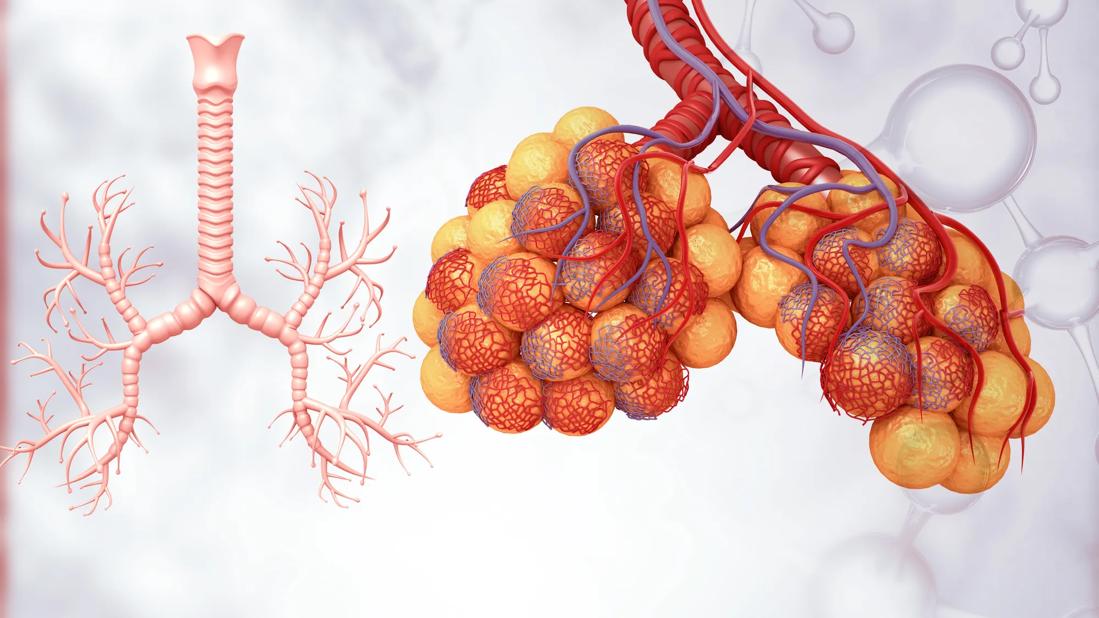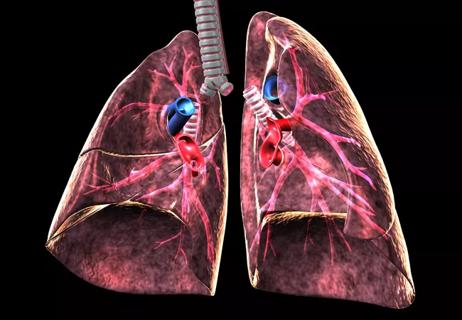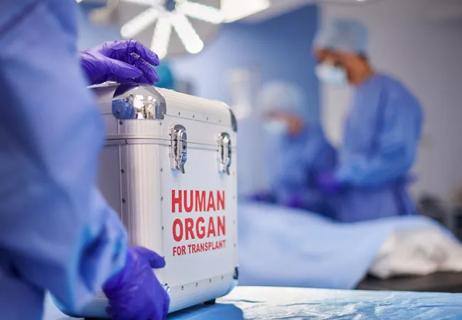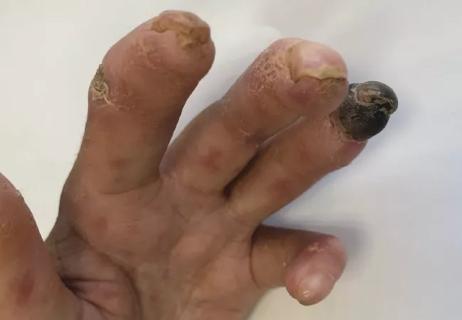Mobile app designed to improve access to lung transplant and reduce waitlist mortality

In the U.S., individuals are prioritized for life-saving lung transplant by lung allocation score (LAS), which considers both the risk of mortality awaiting transplant and the likelihood of survival after transplant. While lung transplant is a treatment option for patients with advanced lung disease due to cystic fibrosis (CF), the LAS does not include all markers of CF disease severity.
Advertisement
Cleveland Clinic is a non-profit academic medical center. Advertising on our site helps support our mission. We do not endorse non-Cleveland Clinic products or services. Policy
A team of Cleveland Clinic pulmonologists has been studying ways to improve access to transplant and reduce waitlist mortality for individuals with advanced lung disease due to CF. With support from the Cystic Fibrosis Foundation’s prestigious Harry Shwachman Clinical Investigator Award, Carli Lehr, MD, MS, worked with her mentors Maryam Valapour, MD, MPP, and Elliot Dasenbrook, MD, to explore the impact of including markers of CF disease severity when prioritizing individuals for lung transplant.
The team found that risk of waitlist mortality was higher than predicted by LAS in patients with:
They also found that incorporating these risk factors with the LAS helped more accurately determine disease severity.
“The addition of CF-specific risk factors led to a higher LAS in more than a third of individuals who died without a transplant, a change that may have led to a life-saving lung transplant,” says Dr. Lehr, the Gregory and Maureen Church Term Chair in Lung Transplantation Research in Cleveland Clinic’s Respiratory Institute.
This work led the team to develop a new clinical tool to help identify these risk factors in patients with CF on the lung transplant waiting list.
Drs. Lehr, Valapour and Dasenbrook aimed to develop a clinical tool that would be easy for patients to use, contribute both clinical and patient-reported data to the transplant team, and incorporate findings from their prior analysis of factors contributing to waitlist mortality.
Advertisement
First they created a 20-question patient survey, combining the previously validated and widely used Cystic Fibrosis Respiratory Symptom Diary – Chronic Respiratory Infection Symptom Score (CFRSD-CRISS) with supplemental questions about physical functioning, appetite and hemoptysis. Next they worked with a respiratory monitoring company to integrate the survey with a home spirometry mobile app measuring FEV1 and forced vital capacity (FVC) — similar to the technology Cleveland Clinic uses to monitor post-transplant patients. The app provides patients with a score as soon as they answer all 20 survey questions and complete the spirometry monitoring.
Patients on the transplant waitlist use the app to complete weekly surveys and spirometry monitoring. Results are transmitted to the research team. Based on results, patients are asked to return to the clinic, repeat testing within 24 hours or repeat testing the following week. This algorithm ensures at-risk patients receive prompt medical attention to update their LAS (and potentially improve their access to lung transplant) or detect and treat infectious causes of clinical decline.
Since the inception of this study, researchers have enrolled four individuals, two who have undergone lung transplant. By using the tool, patients have had more frequent contact with the transplant team and more opportunities to update their LAS.
For example, one patient’s survey responses revealed intermittent hemoptysis, something not captured by the LAS. Given the well-known association of hemoptysis with mortality in individuals with CF, these results led the research team to request an exception to the LAS.
Advertisement
“An exception can be requested when the clinical team feels that the LAS does not accurately capture an individual’s risk of death without transplant,” explains Dr. Valapour, Director of Lung Transplant Outcomes at Cleveland Clinic. “A new score is assigned to better approximate that risk. In this case, our exception request was granted and the transplant for this patient was expedited.”
Feedback from patients has been positive, especially regarding the increased engagement in their care and comfort with home monitoring.
“These are important qualitative successes as post-transplant engagement leads to improved compliance and connection with the transplant team,” says Dr. Lehr. “Familiarity with the home monitoring device gives study patients a leg up. After the initial postoperative period, home spirometry is an important mechanism to screen for transplant rejection between clinical appointments and may help us catch rejection in its early stages.”
The landscape of end-stage lung disease in CF is changing for the better. In October 2019, a new triple-drug therapy combining elexacaftor, tezacaftor and ivacaftor was approved for patients with CF who have at least one F508del mutation in the cystic fibrosis transmembrane conductance regulator protein.
“Modulator therapies have important public health implications as now over 75% of individuals with CF are eligible for treatment that may slow their decline in lung function,” says Dr. Dasenbrook, Director of the Adult Cystic Fibrosis Program and the Bronchiectasis Center at Cleveland Clinic.
Advertisement
Although follow-up has been short, individuals receiving this modulator therapy have experienced improvement in lung function. This should not change patterns of lung transplant referral for individuals with advanced lung disease, yet there has been a nationwide decline in number of candidates awaiting transplant, including lung transplant for individuals with CF. This trend may be partly due to modulator therapy or confounded by a change in listing and transplant practices due to the COVID-19 pandemic.
Regardless, this change will require expanding the study of the disease-severity tool to more transplant centers to ensure enough patients are enrolled to produce valid conclusions.
For more information about the tool or to refer a patient for the study, contact Dr. Lehr at 216.444.0962 or lehrc@ccf.org.
Advertisement
Advertisement

Exploring the cost-effectiveness of end-of-life treatment options

The agent-based model aims to improve prediction accuracy

Cleveland Clinic pulmonologists aim to further lower waitlist times and patient mortality

New research aims to improve suboptimal lung transplant outcomes by “looking beyond the walls of hospitals”

Counseling before and after transplantation can help patients navigate the balance between safety and practicality

Multisystem diseases require multi-disciplinary approach for the best care

New risk-modeling approach to use microsimulations, incorporating day-to-day changes in patients

Cleveland Clinic receives new grant and is named central biorepository site for multi-institutional cystic fibrosis and lung transplant initiative